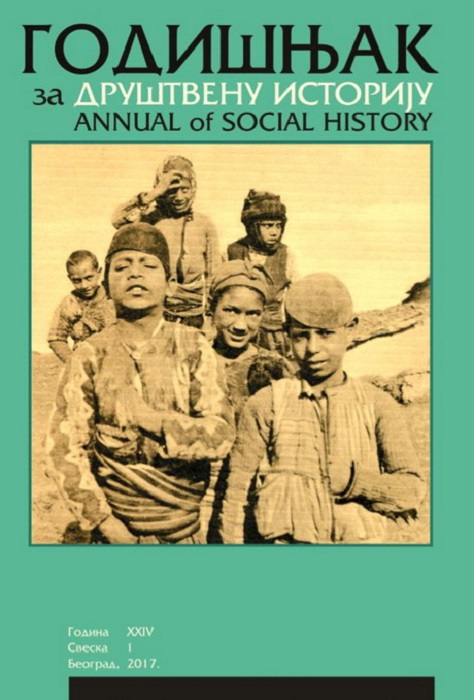Социјални статус Рома у Кнежевини Србији
Social Status of the Roma in the Princedom of Serbia
Author(s): Ivan JankovićSubject(s): Social history, Social differentiation, 19th Century, Pre-WW I & WW I (1900 -1919), Ethnic Minorities Studies
Published by: Udruženje za društvenu istoriju
Keywords: Roma; Princedom of Serbia; social status; dishonourable occupations; ethnic distance; segregation; marginalization
Summary/Abstract: Social status of the Roma in Serbia until 1884, like their legal status, was comparable to that in other provinces of the Ottoman empire: they were marginalized and stigmatized, at the very bottom of the social hierarchy. This was due to the nomadic lifestyle of a part of the Roma population, their identification with dishonourable occupations, their religious indif ference and the colour of their skin. They were spatially segregated into separate neighbour hoods (cigan-mala), which since 1850 were also designated for the mandatory residence of prostitutes, which contributed to the general stigmatization of the Roma. The ethnic distance between the Serbs and the Roma was extreme, with a very few interethnic marriages: the Orthodox church did not allow marriage between the nomadic Roma and the Serbs, although marriages between sedentary Christian Roma and the Serbs were possible. The Roma based their political legitimacy on the participation of individual Roma in the First Serbian uprising (1804–1813), as well as on the 1838 Constitution under which they considered themselves as rightful Serbian citizens.
Journal: Godišnjak za društvenu istoriju
- Issue Year: 2017
- Issue No: 1
- Page Range: 7-24
- Page Count: 18
- Language: Serbian

